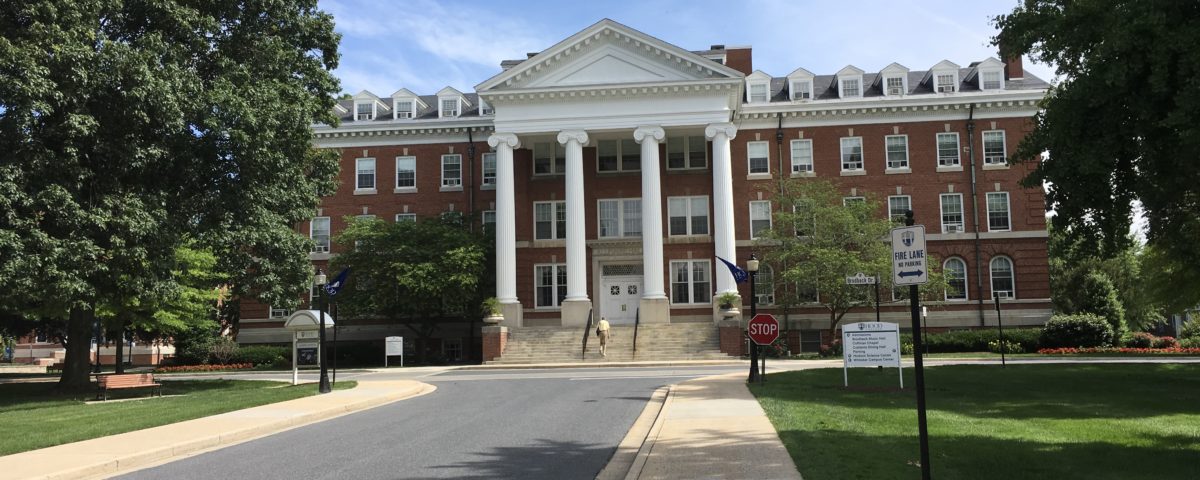On the Road with Betsy Woolf – Hood College

One of the perks of this career is the opportunity to not just visit and revisit a wide range of colleges, but also to visit a vast array of locations, many of which I certainly would not have visited otherwise. Despite growing up less than two hours away, I had never visited Frederick, Maryland, until 2008, and then it was a quick in-and-out to Hood College on a bus filled with college counselors and back to my Baltimore conference. So it certainly was time this year to return to Hood and to have the opportunity to check out its hometown of Frederick.
What was the bigger surprise? The college or the city? Hard to tell. Frederick, I was told, is the second largest city in Maryland, so of course, it offers the benefits of urban life. But what was most interesting to me – and will be to my students – is its historic nature and the proximity of a charming, historic downtown to campus. My tour guide told me that she likes to take the 10 to 15 minute walk from the immaculately groomed colonially inspired campus to enjoy the charming shops and many downtown restaurants.
In my meeting with Bill Brown, the Vice President for Enrollment Management, I discovered that he, too, was born in Central Pennsylvania – he in Lancaster and I in Harrisburg. He had come to Hood College four years ago, and it was Bill who told me about the resurgence of the downtown with its museums and historic houses, and the pretty creek with flowering lily pads, surrounded by new apartment buildings and restaurants, on its banks. Checking it out myself, I enjoyed an outdoor lunch a RoRo, a Mexican Grill.
But more about Hood itself. A former all-female institution that went co-ed in 2003, Hood has a healthy endowment of $100M, and is a beneficiary of funds from the Hodson Trust, which annually awards significant scholarships to the private colleges of Maryland – Johns Hopkins University, St. John’s College, Washington College and Hood College. Athletics are Division III, although the college does not field a team in football or ice hockey.
Evidence of the health of the college is evident all over campus. Undergrad housing for upperclassmen is under construction, to be followed by a renovation of the college library. There is new turf on the athletic field and new lighting. The business program has evolved into a “very entrepreneurial” School of Business, according to Mr. Brown, and there are plans to expand the broadcasting center. There is even a cyber-security lab on campus.
Hood’s 1200 undergraduates benefit from a graduate presence that allows them to not only take advanced classes but also to accelerate and obtain master’s degrees in five years in such areas as business administration, environmental biology, information technology, biomedical science, and counseling. Internships are popular, as Frederick boasts a bio-tech industry, as well as opportunities at the National Cancer Institute nearby and at Fort Detrick, the communications center for the White House. The Frederick Memorial Hospital next door to campus offers opportunities for nursing students, as nursing is one of the most popular majors on campus. Business, education and biology are also popular. The college’s academics include a coastal studies program, integrated marketing communications, Latin American Studies, and law & criminal justice, as well as minors in public history, social science research and nonprofit & civic engagement studies.
Admission at Hood College, which is only an hour from Washington, D.C. and from Baltimore, is test optional and rolling. The student to faculty ratio is 11 to 1. My tour guide, a rising junior, told me that her largest class was comprised of 30 students.

